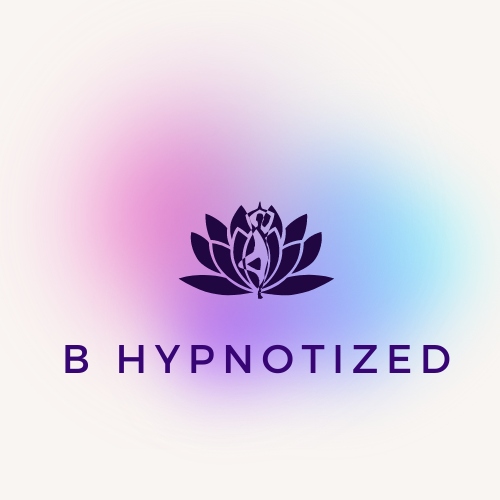What Makes Hypnosis and Meditation Different?
As hypnotherapists, we always talk about how hypnosis is nothing but a deep state of calmness and relaxation. That makes hypnosis sound a lot like meditation, right? So, what is the difference between meditation and hypnosis? How can someone flip their lives upside down with hypnosis, but be more conscious and calmer with meditation?
Many first-time hypnotherapy candidates wonder after the session; Is this hypnosis? Was I really hypnotized? Because the main feeling they experience is deep calmness and relaxation. And they keep thinking they were in a meditative state. Hypnosis may feel similar to meditation at times but the results will be significantly different. Let’s start with hypnosis and the hypnotic state:
Hypnotic State
A hypnotic state, also known as hypnotic trance, is a deep state of calmness and relaxation that is created by a hypnotist or a hypnotherapist. The trance is a very focused state and the attention of the person is gathered on the voice of the hypnotherapist. During hypnosis, the brain waves slow down to the theta state. All the body parts are heavily relaxed so much so that people may feel like they cannot move their body parts at times. It is almost like all of the senses are put to rest during hypnosis. As a result, a state between being asleep and awake is created.
Not everybody responds the same to hypnosis. Some people’s bodies may be similar to the awake state and they may be simply very relaxed. Some people start showing bodily reactions such as rolling their eyes or limping dramatically. All these are natural responses and they all change from person to person.
Meditative State
A meditative state can be considered as a hypnotic state. Just like hypnosis, a meditative state is reached through calmness and relaxation as well. During meditation, a focus is created with breath, mantra, object, or thoughts. This high level of focus enables a deeper mind connection.
During meditation, the brain waves slow down to theta state as well. However, the mind is focused on stillness and calmness, the body is relaxed but not as deep as a hypnotic state.
Meditation is mostly done while straight sitting and the legs are crossed in a frog position. This allows the breath to flow easily while the chakras are in alignment. The downside of this position is not being able to fully relax physically due to sitting and all the active muscles during sitting.
How are Meditation and Hypnosis Similar?
Recent research shows that during hypnosis and meditation the same parts of the brain are active. For example, according to a study that was published in Medical Hypothesis, the same cerebral responses posited during meditation and hypnosis.
It is apparent that during both hypnosis and meditation, there is an extensive feeling of relaxation and calmness along with the stillness of the mind.
It is also very common that during hypnosis and meditation, people feel more emotions than in daily life. My take on this is that during the day, the mind is very busy with environmental and social stimulants. Therefore, stressful emotions are usually pressured into the subconscious mind. During a calm and relaxed state, these pressured emotions surface themselves back.
How are Meditation and Hypnosis Different?
Although both meditation and hypnosis work through calmness and relaxation, the results they bring are quite different from each other.
Meditation and mindfulness techniques are usually used to vent out stress and tensions as well as create stillness and calmness in the mind. On the other hand, hypnosis is used to change the subconscious belief systems through suggestions and imagery journeys. In other words, hypnosis is used to rewire subconscious programming rather than just venting out unwanted emotions.
Another difference is that during hypnosis, people are in a trance state in which they feel like they are between sleeping and wakefulness. This trance state allows the subconscious mind to tune in and makes it possible to rewire toxic belief systems. On the other hand, during meditation, calmness, and relaxation are limited due to the sitting position and the fact that the person is leading himself/herself to the meditative state. Therefore, fully letting go may not be accomplished in each trial.
BONUS: How are Self-Hypnosis and Meditation are Different From Each Other?
Self-hypnosis and meditation are actually very similar to each other for many reasons. Let’s start with self-hypnosis:
Self-Hypnosis
Self-hypnosis is a form of hypnosis in which the person leads himself/herself down to the hypnotic state through organizing their thoughts. It is usually considered a light state of trance. It starts with a focused state of calmness and relaxation and continues with self-affirmations or imagination.
Similarities vs Differences
Self-hypnosis is a lot more similar to meditation than hypnosis because both self-hypnosis and meditation are self-induced. Plus, both of them require the person to create a focused state of awareness within.
The biggest difference between meditation and self-hypnosis is that during meditation, the mind usually wanders off to other topics or emotions and on self-hypnosis, the mind is really focused on the steps in order to create a hypnotic state.
Many people who have hard times focusing during meditation find self-hypnosis more effective because it teaches them to be more focused and organized in their thoughts. Many other people who are looking for stillness and calmness find meditation more helpful because it helps them to control their thoughts.
Final Thoughts…
There are a number of ways for self-improvement and using the mind’s power. Some people connect to their higher self via breathing, some do via yoga or through other spiritual resources. Meditation and mindfulness have been the most known and popular gateways to the powerful mind in the last century. However, self-hypnosis and hypnosis carry significant transformative effects as well. Pick what feels right to you. Remember, everybody is different. You are different. Find what works for you and keep practicing it!

